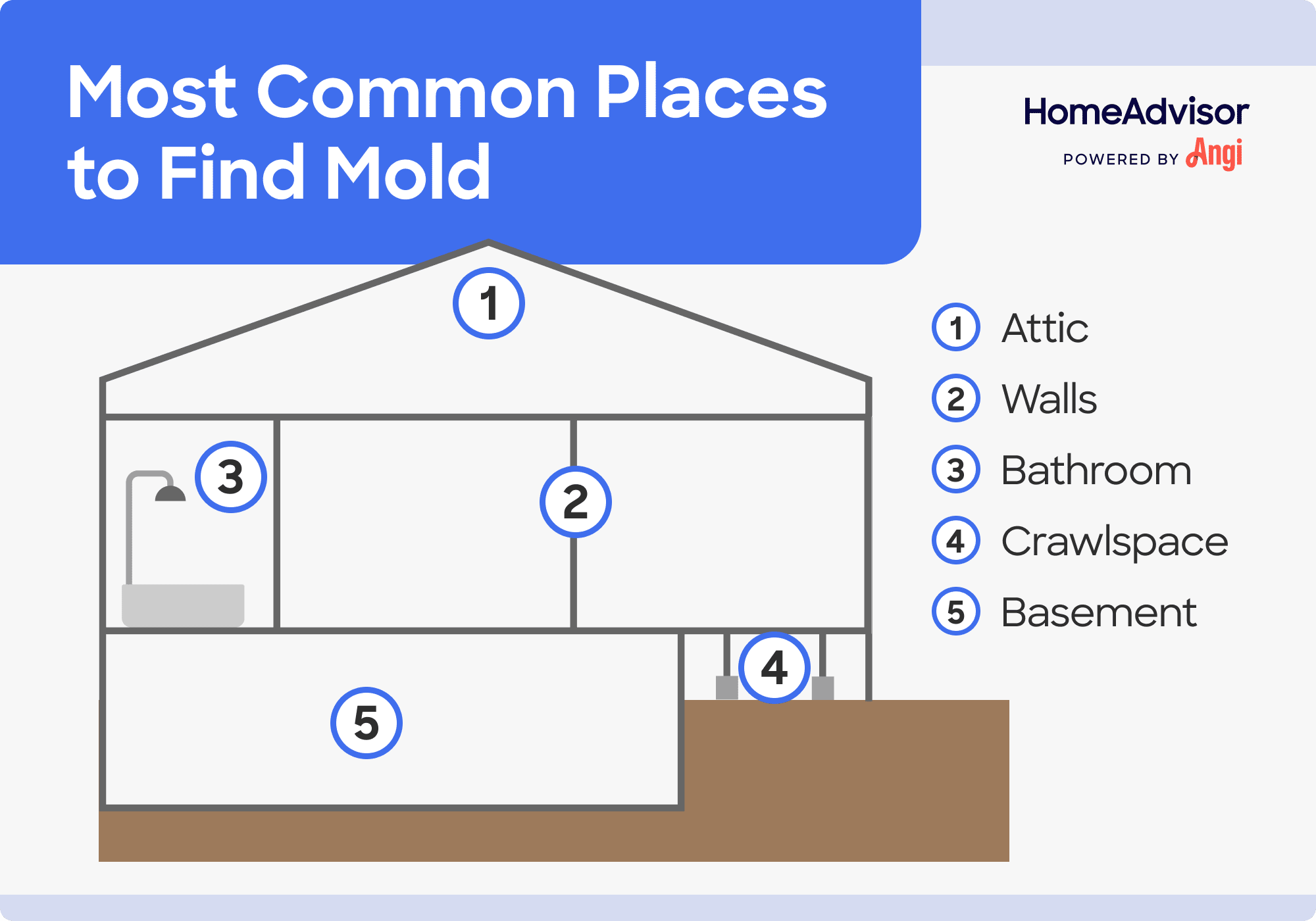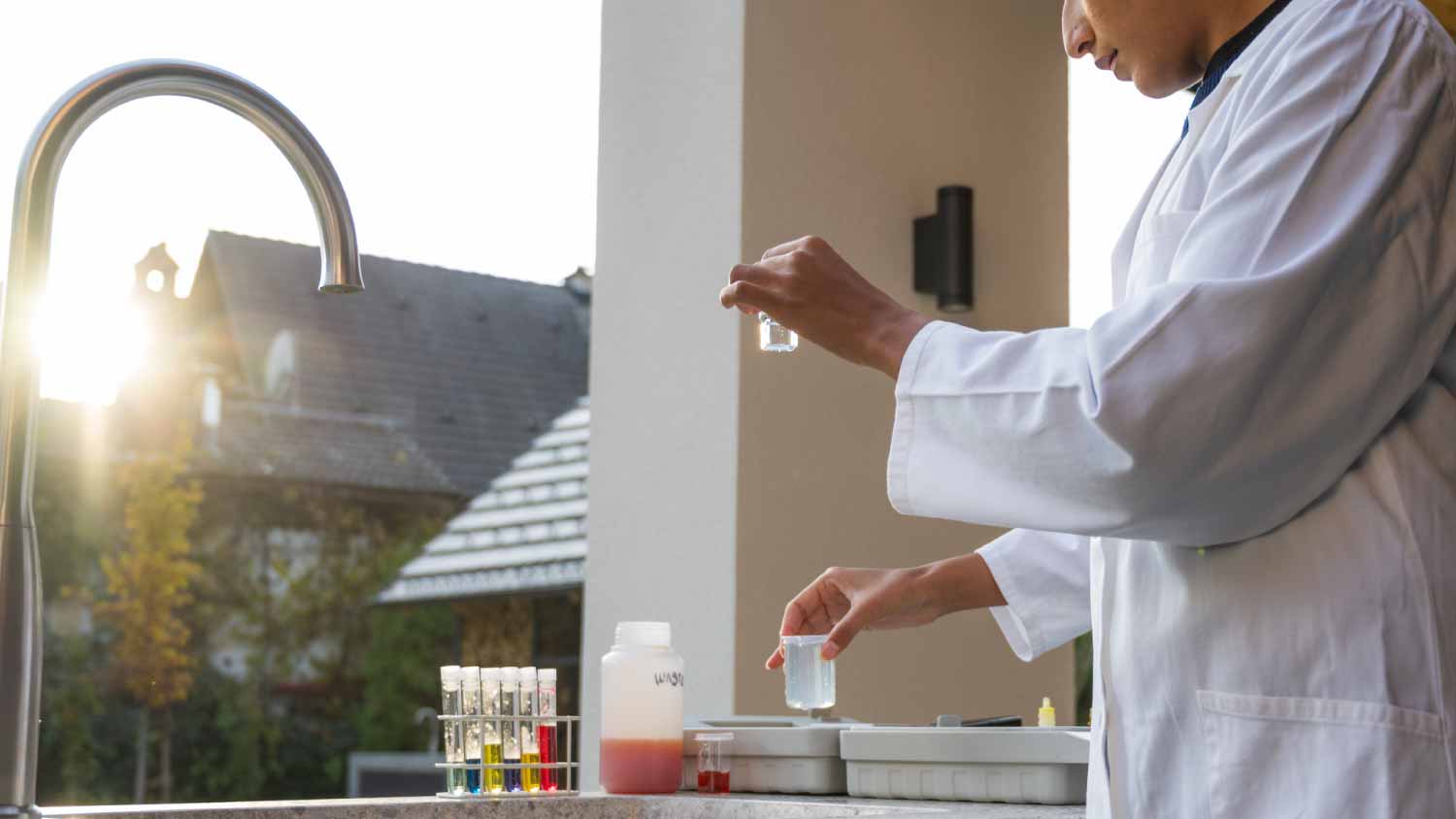
Budget for mold inspection costs based on factors such as the size of your home, testing type, mold type, location, accessibility, and more.
Removing mold costs an average of $2,366


Average mold remediation costs range from $1,223 to $3,752, with an average of $2,366.
Major factors include infestation size, mold type, and location in your home.
Mold remediation removes indoor growth that can compromise your health and damage your home’s structure.
Acting quickly keeps health risks in check and helps you avoid much costlier repairs later.
This article was updated using automation technology and thoroughly reviewed for accuracy by HomeAdvisor Editor Ryan Noonan.
On average, mold remediation costs between $1,223 and $3,752. Understanding the factors that drive those numbers—and lining up quotes from a qualified pro—will help you land on an accurate budget. Most homeowners spend $2,366 for mold remediation, with the bulk of jobs landing between $10 and $25 per square foot.
Mold remediation protects both your health and your property value. Costs rise or fall with the size and location of the growth, the mold type, and any related damage. Because untreated mold can trigger serious health concerns and structural issues, build room in the budget to bring in a licensed remediation specialist who can remove the mold—and its source—safely.

Mold remediation goes beyond basic removal—it stops existing growth and prevents it from coming back. Start with a visual inspection, then call a pro for air or surface tests if you think mold is lurking behind walls or in a damp basement.
Basic mold testing costs between $250 and $350, while more comprehensive testing, including lab analysis, can range from $450 to $800. From there, you should hire a professional remediation company to address the mold issue thoroughly and safely.
Several variables steer your final bill—here’s a closer look at how your total breaks down.
Where the mold hides—and how much of it there is—drives the final price tag. Use the table below to gauge average costs by room.
| Location | Average Cost |
|---|---|
| Attic | $1,000–$4,000 |
| Basement | $500–$3,000 |
| Bathroom | $500–$1,000 |
| Crawl space | $500–$2,000 |
| Wall | $1,000–$20,000 |
| HVAC or AC system | $3,000–$10,000 |
| Whole house | $10,000–$30,000 |
Mold removal pros charge $10 to $25 per square foot. Heavy growth or corrosion can force you to replace drywall, subflooring, or other materials, which quickly adds to the total. Location in the home and mold type also push costs up or down.
Additionally, the type of mold can affect remediation costs due to the need for specialized equipment and precautions when dealing with toxic varieties like black mold. Many remediation projects also require specialized protective and disposal equipment.
The most hazardous strains include:
Aspergillus
Chaetomium
Fusarium
Black mold
These mold varieties are less harmful to humans, but still require mediation from a professional:
Alternaria
Aureobasidium
Cladosporium
Fusarium
Serpula lacrymans
Trichoderma
Ulocladium
Mold can quietly wreck drywall, flooring, and framing—and endanger your health. Remediation isn’t cheap, but tackling it early prevents far bigger repair bills down the road.
Here are the estimated costs for frequent mold-provoked repairs:
Flooring repair: $200–$550
Carpet repair or replacement: $775–$2,600
Drywall repair or replacement: $1,000–$2,900
You can tackle a very small job—about 10 square feet—for $50 to $300 in gear and cleaners. The U.S. Environmental Protection Agency sets that 10-square-foot limit. Even then, mold often hides in wall cavities or HVAC runs, so move forward only if you’re confident you’ve found every spot and have the right safety gear.
For anything larger—or if tests reveal a toxic strain—bring in a local professional mold remediation crew. Multiple growth sites, hidden moisture, or hard-to-reach areas almost always demand specialized equipment and training.
No place is more important than your home, which is why HomeAdvisor connects homeowners with local pros to transform their houses into homes they love. To help homeowners prepare for their next project, HomeAdvisor provides readers with accurate cost data and follows strict editorial guidelines. We surveyed thousands of real customers about their project costs to develop the pricing data you see, so you can make the best decisions for you and your home. We pair this data with research from reputable sources, including the U.S. Bureau of Labor Statistics, academic journals, market studies, and interviews with industry experts—all to ensure our prices reflect real-world projects.
From average costs to expert advice, get all the answers you need to get your job done.

Budget for mold inspection costs based on factors such as the size of your home, testing type, mold type, location, accessibility, and more.

Curious who installs radon mitigation systems? Learn who to hire, why specialists matter, and what radon mitigation costs so you can take safe action now.

Not sure who to call for mold removal? See when to hire a mold specialist or restoration pro, plus costs and steps to expect.

Curious who to call for a mold inspection? Discover mold inspection costs, pro options, and what to expect before you book.

Find who to call to test water for lead. Learn when to hire a certified water testing professional or state-certified laboratory and what to expect.